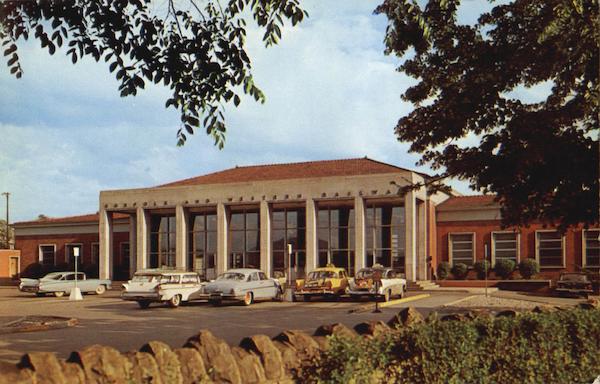Besides the modernistic Pennsy T-1 locomotive Raymond Lowery, the industrial designer, is credit with...
The news article can be found here.
http://www.aiga.org/air-force-...the-graphic-history/
Enjoy.
Jan
Thanks! Corrected my spelling.
|




|
Besides the modernistic Pennsy T-1 locomotive Raymond Lowery, the industrial designer, is credit with...
The news article can be found here.
http://www.aiga.org/air-force-...the-graphic-history/
Enjoy.
Jan
Thanks! Corrected my spelling.
Replies sorted oldest to newest
Yes...

Among other things...









Skylab?


The article is OK (for a generic article of that type; he had no connection with "Penn Central", for example), but let's not forget that he did not design passenger aircraft; he designed the -appearance- of items. Much of "his" work was done by employees of
his company.
Henry Dreyfuss was in much the same situation (he did, among other things, telephones, Hoover vacuums, typewriters, John Deere tractors and 3 well-known locomotive designs - the Mercury 4-6-2, among them) - much was done by employees in his office.
But, without both men's actual work and inspiring taste, much of the above would have
never been done, even if it was "only" approved by them, sometimes.
The article is OK (for a generic article of that type; he had no connection with "Penn Central", for example), but let's not forget that he did not design passenger aircraft; he designed the -appearance- of items. Much of "his" work was done by employees of
his company.
Henry Dreyfuss was in much the same situation (he did, among other things, telephones, Hoover vacuums, typewriters, John Deere tractors and 3 well-known locomotive designs - the Mercury 4-6-2, among them) - much was done by employees in his office.
But, without both men's actual work and inspiring taste, much of the above would have
never been done, even if it was "only" approved by them, sometimes.
Jon, where are the Northern Pacific passenger cars? Wasn't the two tone green his design?
He is accredited for the design. Here are a few, Elliot



I knew I could count on you.![]()
As always. Here's another for desert...

He had a lot of railroad credits over his long career. Check out some of his greatest hits.
Fairbanks Morse appears to have used him exclusively for their locomotives. It explains the "less is more" simplicity in FM design.
Bruce
His work on airplanes was limited to surface graphics and some interiors. He is also credited for the 1950 Lionel #497 coal loader.
He and his firm also updated many federal government logos and designs in the 1960's under President Kennedy. Near and dear to my heart, the U.S. Coast Guard and our racing stripe.
From this:

To this:

I believe he did the '53 Studebaker.
International Harvester Farmall letter series tractors. An agriculture icon. I have five sitting in my machine shed.
I believe that Raymond Lowey also designed Norfolk & Western Roanoke VA Railroad Station. .

Just like I don't think Walt Disney hand drew all of the animation of his movies I don't think Loewy did all of the designs attributed to him. Because he had his name on the design company he did have the final producer credit over the work from his company.
Here are are a few more transportation pictures attributed to him. While he did not design this UP engine scheme it copies the Air Force one paint scheme he did design.
Industrial Designers are 50% artist and 50% engineer otherwise they would have no idea if their designs can be practically manufactured.
Raymond Lowey directed a design firm and as such he had talented people working under him. You can bet when soliciting business, It was Lowey, not one of his subordinates, that was making the presentation.
I believe he did the '53 Studebaker.
Robert Bourke, a head designer at Loewy, did it. The '53 Starliner hardtop was selected by the Museum Of Modern Art in New York as one of the best car designs of all time. As great as it was, it translated poorly into the sedan models.
I had a hard time believe Raymond Loewy did the George Bush paint scheme on the SD70ACe. But before I opened my mouth, I figured I better do some Googling.
Conclusion: Close enough! The paint scheme was for Air Force One, and the paint scheme was applied to the engine.
I believe he did the '53 Studebaker.
Robert Bourke, a head designer at Loewy, did it. The '53 Starliner hardtop was selected by the Museum Of Modern Art in New York as one of the best car designs of all time. As great as it was, it translated poorly into the sedan models.
You're absolutely correct, the 53 coupe was designed primarily by Robert Bourke.
The 53 sedan designs were close to the coups, but Studebaker management wanted a more conventional design. The original production was to be 20% coups and hardtops and 80% sedans. demand was exactly the opposite.
Access to this requires an OGR Forum Supporting Membership
